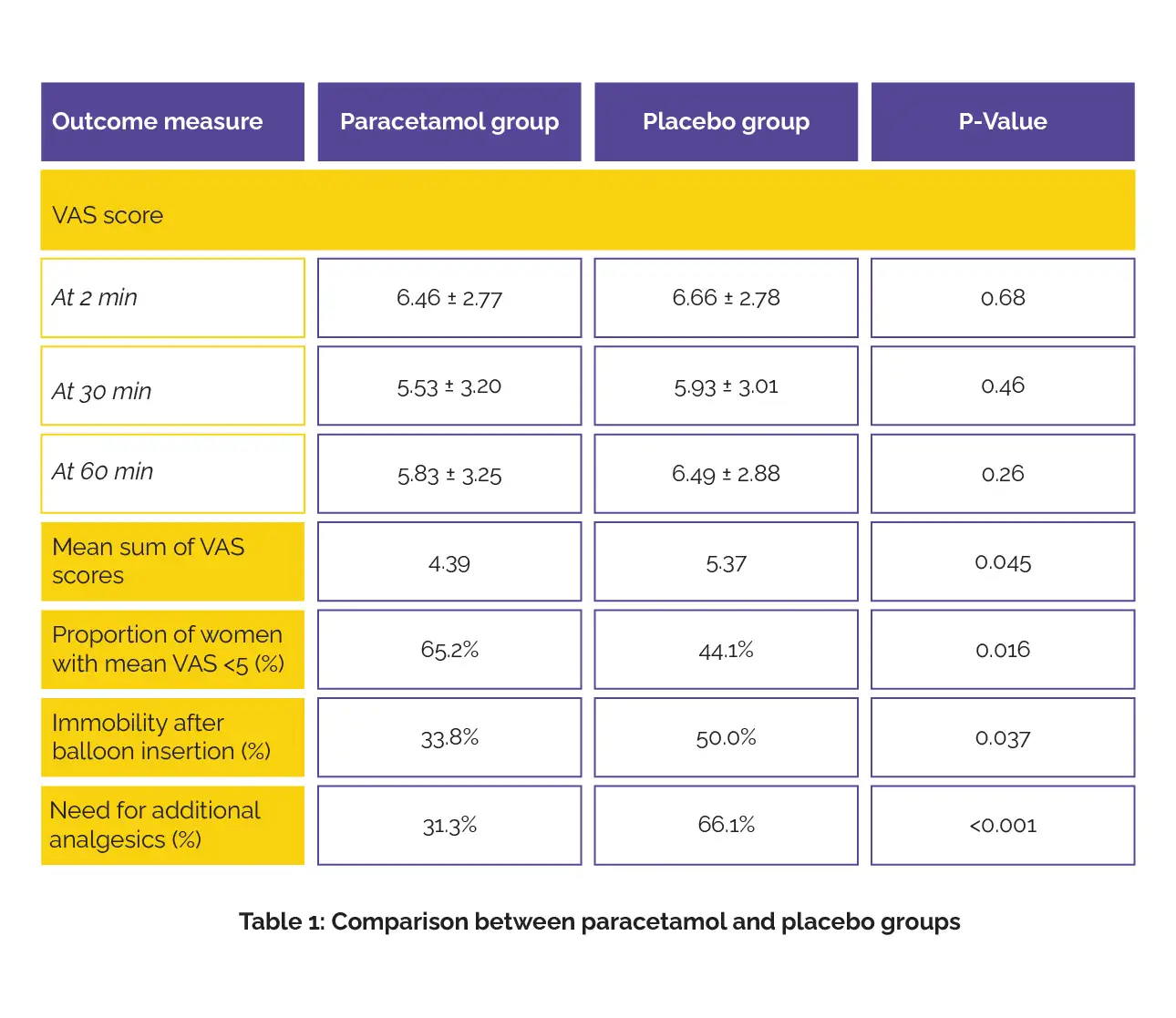Categories
Change Password!
Reset Password!


Paracetamol before catheter balloon insertion lowers pain scores, reduces analgesic use and immobility, but does not affect maternal satisfaction or labor outcomes.
In a randomized controlled trial led by Maya Frank Wolf et al., administering paracetamol before catheter balloon placement in women undergoing labor induction reduced mobility restrictions, pain scores, and additional analgesics usage during the procedure. However, it did not markedly affect overall maternal satisfaction or labor and neonatal outcomes.
The goal was to determine paracetamol's effectiveness in managing pain and satisfaction in 141 primiparous women at term who were admitted for medically-indicated labor induction. Participants were randomly segregated to get either 1 gram of intravenous paracetamol diluted in 100cc normal saline (71 participants) or a placebo solution of 100cc normal saline (70 participants) prior to balloon catheterization.
The primary outcomes measured were maternal pain, assessed using visual analog scale (VAS) scores at different time points (pre-induction, 2 minutes, 30 minutes, and 60 minutes post-catheter insertion), and maternal satisfaction, measured via a post-procedure questionnaire. There was no vital difference in maternal pain before catheter balloon insertion between the paracetamol and placebo groups. Median pain scores at 2, 30, and 60 minutes post-catheter placement were similar across the groups.
However, when comparing the overall VAS scores, the paracetamol group exhibited a lower mean sum and a higher proportion of women with a mean VAS score under 5. In a multivariate analysis adjusted for maternal age, this difference remained meaningful (OR=2.2, 95% CI 1.1–4.5, P=.036). Following balloon insertion, fewer women in the paracetamol group were immobile or required additional analgesics.

However, maternal satisfaction scores did not considerably differ between the groups (P=.877). Additionally, no prominent differences were observed in cervical ripening, time from catheter insertion to delivery, or labor and neonatal outcomes between the groups. In conclusion, pre-catheter balloon paracetamol administration was linked to reduction in pain, mobility issues, and analgesic use, but did not impact overall satisfaction or labor outcomes.
American Journal of Obstetrics & Gynecology MFM
Paracetamol prior to catheter balloon insertion for labor induction—A randomized controlled trial
Maya Frank Wolf et al.
Comments (0)